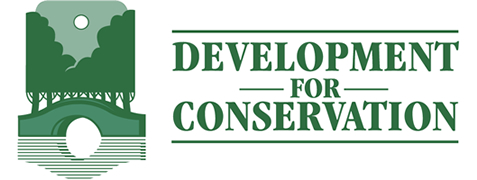
16 Sep Simplify Response Options for Better Results and More $$
16 September 2025
By David Allen, Development for Conservation
Are you planning to use a preprinted response envelope for your appeal this Fall? You know, one of those oversized flap things with plenty of room to write out all the various questions you want donors to respond to on their way to putting their check in the mail? Oversized envelopes make all kinds of sense – for you. It makes your life a lot simpler. One-size-fits-all.
But it doesn’t necessarily work best for the donor. You can help them respond (and raise more money) by simplifying the printed text. Here’s how:
- Remember that sending an ask string to a donor is the same as asking for one of the lowest two amounts listed. For most people you will be soliciting, $100 should be requested in the letter. So, $100 should be the lowest or second lowest amount listed. Only one amount – usually $35 or $50 – should be lower than $100. (Do you EVER need to offer more than one option less than $100?)
- You WANT to ask people who gave you more than $100 last year to give more than $100 this year. You DON’T want them to get an envelope with amounts starting lower. So, you will need different envelopes, or another plan altogether, for them. I have always preferred plain #9 response envelopes with a preprinted return address and a response card that is tailored to the ask in the letter. Maybe you could hand-tailor cards for only the donors you are asking for more than $100.
- You don’t need to ask for anything else on the envelope flap. Not monthly giving, planned giving, volunteering, or leaving a bequest. Let the letter just ask for a special year-end gift and let the envelope just include special year-end giving information. The marketing pros will tell you that single subject emails (and single-subject blog posts!) are more effective communication than emails including multiple items. The same thinking applies here. Let the appeal request be a singular request. You will raise more money. Use different letters in January to ask for monthly giving, in the Spring to recruit volunteers, and in June to let people know about bequest options.
- Including a QR code (or hotlink for email) is now a MUST in 2025. Many donors don’t have check books – they won’t be writing checks. The QR code should take them to a website landing page that looks substantially like the response envelope. This is probably not your main landing page, so you’ll need to create a new landing page just for the appeal. The QR code should be printed on the response envelope as well as the letter.
- Now that you’ve reduced the clutter, bump up the type size and space the lines enough that normal people can write their information on them. The average age of conservation donors is about 67. They depend on readers to see, and they can’t make out 6 pt type.
Other thoughts and tips:
Don’t use the oversized envelopes from last year in an effort to save expenses. If saving a few hundred dollars on preprinted envelopes ends up costing you responses and money, it won’t have been worth it.
If you ask for $35 in the letter (versus asking for $100), you will have more people giving you money. If you ask for $100 (versus asking for $35), you will raise more money. There are times when you will want to choose one over the other. Make sure you are asking for what you want. You can use the same response envelope for both asks.
You will get more responses AND raise more money by asking for a specific amount of money than you will asking people to “please give again this year.”
Be bold. Be specific. Raise More Money.
Cheers, and have a great week!
-da
PS: Your comments on these posts are welcomed and warmly requested. If you have not posted a comment before, or if you are using a new email address, please know that there may be a delay in seeing your posted comment. That’s my SPAM defense at work. I approve all comments as soon as I am able during the day.
Photo by Ahmet Yüksek courtesy Pixabay



Sorry, the comment form is closed at this time.